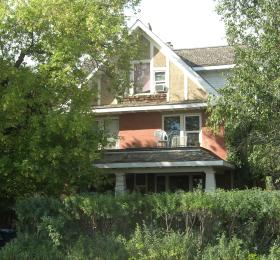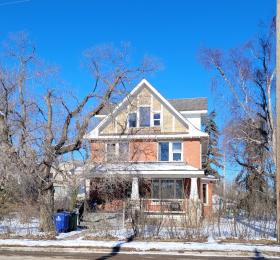Powe House
- Holding Bylaw
Description of the Historic Place
The Powe House is an original homestead residence that was built in 1914. Today the home is located within city limits in the Sutherland neighbourhood.
This historic place, located at 100 115th Street West, is listed under Bylaw No. 6770 (Holding Bylaw). This Bylaw provides short-term protection of the building from demolition by providing for a 60 day holding period in the event a demolition permit is received. Within that 60 day period heritage designation is considered by City Council.
Heritage Value
The Powe House was located on the original homestead of the Powe family, one of the early pioneer families in the area. James Powe and his family arrived in Saskatoon from Ontario in 1884. Powe was a carpenter, and was one of the first trustees of the Little Stone School House and a member of the Sutherland town council from 1916 to 1921. James’ wife Mary was a postmistress at the first post office in Nutana from 1887 to 1903. The Powes first homesteaded in the Warman area before moving in 1887 into Saskatoon. In 1893 the Powes moved again to a homestead located north of the village of Sutherland – now located at 100 115th Street West. The Powes occupied the home they built until 1927. In 1928 it became the home of Mont Edward (Monty) Rayner, who had operated Tayner's Meat Market on Sutherland's Central Avenue since 1914. Rayner also served on the Sutherland town council, from 1928 to 1933.
A number of changes have been made to the Powe house over the years, but some features have been retained including the spacious verandah, with heavy wood and fieldstone piers and dormer windows on each side of the roof.
Source: City of Saskatoon Built Heritage Database
Character Defining Elements
Key elements which contribute to the heritage value of this historic resource include:
- Those features representative of its historical significance such as its original location in the Sutherland neighbourhood and its fieldstone foundation; and
- Its architectural features, evident in its verandah with heavy wood, fieldstone piers and dormer windows.


